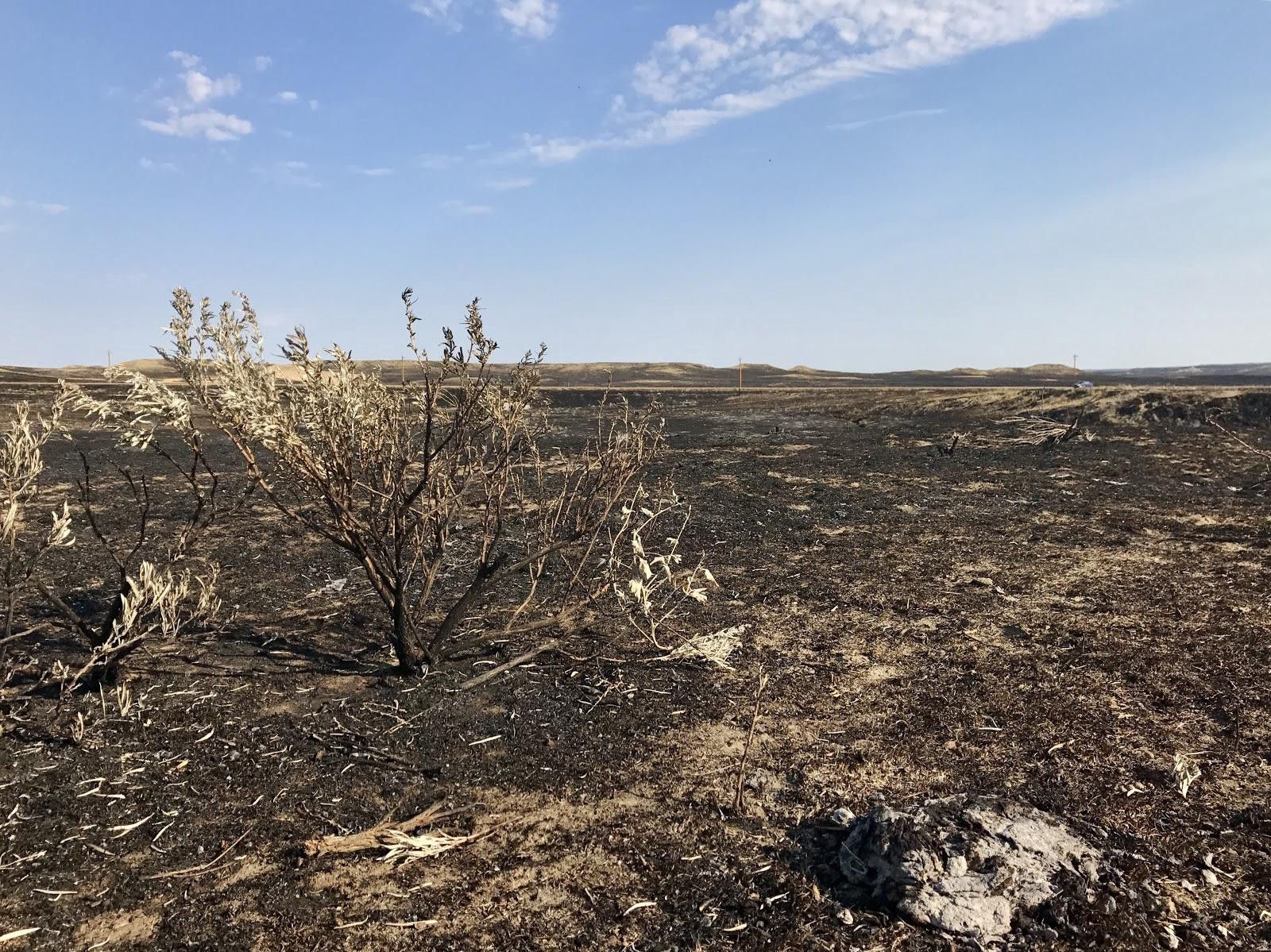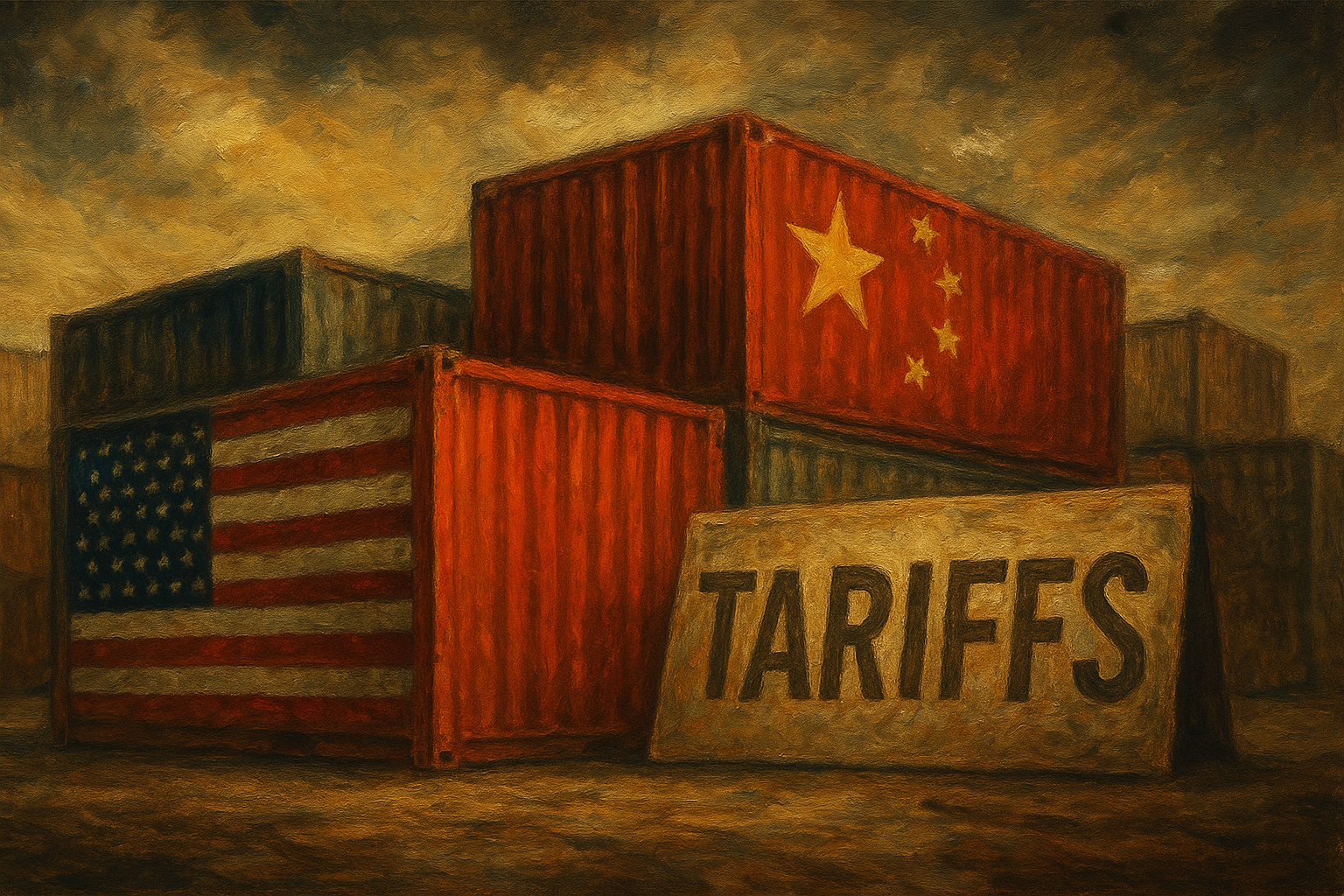Research sponsored by global credit ratings agency Moody’s concludes that by the end of century, parts of the US and Europe are now bound to experience severe reductions in rainfall equivalent to the American ‘dust bowl’ of the 1930s, which devastated midwest farming for a decade. These consequences are now ‘locked in’ as a consequence of carbon emissions which we have already accumulated into the atmosphere.
But that’s not all. A spate of new scientific research released through 2019 has thrown light on nearer-term risks of a global food crisis in coming decades, such as a multi-breadbasket failure — due not just to climate change, but a combination of factors including population growth, industrial soil degradation, rising energy costs, groundwater depletion, among other trends.
Taken in context with a number of climate change models produced over the last decade, the heightened risk of droughts in the 2020s means that a global food crisis could be imminent. Over 1,700 published climate models examined by the University of Leeds point to the risk of a global food crisis after 2030; and 12 models point to this risk emerging and amplifying in just three years.
None of this research shows that the destructive impacts on human societies are unavoidable. With foresight, planning, mitigation, adaptation and cooperation, it’s possible for us to not simply build resilience to coming crises by minimising disruptions and protecting the vulnerable; but to pave the way for a sustainable food system that can operate as a solution to climate catastrophe.
The ‘locked in’ impacts of climate change are bound to produce “severe” impacts on societies over the next decades, according to new research sponsored by one of the world’s biggest financial agencies. Among those impacts, the degradation of global freshwater supplies in particular threatens to destabilise the global food system. Historic carbon emissions appear to have made it inevitable that by the end of this century, some of the world’s most important agricultural producers will experience conditions similar to the ‘dust bowl’, the worst human-induced ecological disaster in American history.
The new report comes from climate-risk data firm Four Twenty Seven, affiliated to one of the world’s three biggest credit ratings agencies Moody’s. It explores societal risks from the impact of past carbon dioxide emissions implying certain levels of global warming are now unavoidable. The report is designed to inform financial investors of unavoidable impacts due to previous carbon emissions, as well as likely dangers from continuing emissions.
“We are already locked into substantial impacts because past emissions will continue to contribute to warming regardless of any emission reductions made today” concludes the report, published in November 2019 but unreported until now. “As an analogy, the effect of significantly reducing GHG [greenhouse gas] emissions is akin to applying the brakes on a rapidly moving truck.”
The coming food crisis
Among the physical impacts identified, the most alarming includes increasing of water scarcity in areas of southern Europe, the Mediterranean, southwest United States and southern Africa. By the end of century those regions are now bound to experience “10 to 20 percent reductions in dry season rainfall, reductions equivalent to the two decades surrounding the American ‘dust bowl.’”
Nik Steinberg, Director of Analytics of Four Twenty Seven and author of the firm’s new climate risk report, told me that these conditions are now inevitable. They will occur as “an effect of committed warming” that is “effectively locked in and expected to occur by 2100, regardless of any mitigation outcomes before then.”
Such heightened water stress has “dire implications for food security, water availability, and wildfire risk,” adds his report, titled Demystifying Climate Scenario Analysis for Financial Stakeholders. These consequences are among many which are now “locked in” as a direct result of carbon emissions already in the atmosphere.
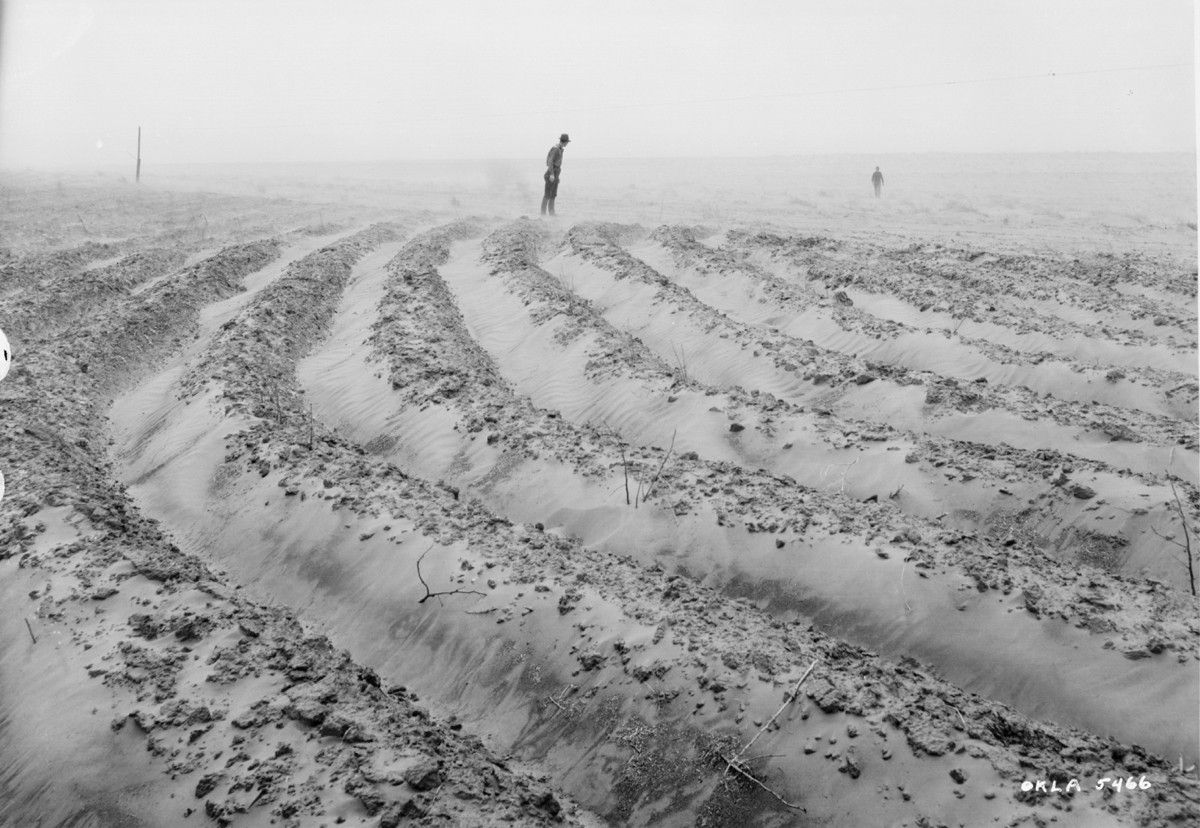
The American ‘dust bowl’ was a period of severe dust storms and heatwaves that produced the worst drought in North America in a thousand years, destroying midwest crops. From 1933 to 1939, wheat yields declined by double-digit percentages, with vast economic and societal consequences, eroding land value throughout the Great Plains states and displacing millions of people.
An earlier study in Nature found that a drought on the scale of the American ‘dust bowl’ today would have similarly destructive effects on US agriculture despite modern technological advances.
The Four Twenty Seven report finds that even if we immediately ceased all emissions today, the ‘dust bowl’ scenario is now unavoidable for parts of the West by the end of this century. To evade this outcome, we would need to not just halt global fossil fuels pollution right now, but somehow suck the carbon we’ve already emitted out of the oceans and atmosphere, and store it safely.
Along the way, within the next few decades, areas of higher altitude in northern Canada, Russia, the Himalayas, Andes, and Alps will experience temperatures up to 25 percent hotter, the report finds. The record-breaking disruptive heat waves seen across the United States, Japan and Europe in 2019 are also a taste of things to come according to the Four Twenty Seven report, which warns of “significantly more [such] severe events” by mid-century, also locked in due to past emissions.
Near-term risks?
The Four Twenty Seven report bases some of its analysis of water stress on data from a new tool released in November, Aqueduct Food, created by the World Resources Institute. Data from the new tool — which was funded by Cargill, the world’s largest food producer by revenues — reveals that by 2040 as much as 40 percent of all irrigated crops will face acute water stress.
This could impact a number of major crops. Sara Walker, who leads WRI’s global water quality programme, told me that rice, wheat and maize will be significantly affected.

Some 70 percent of rice production and one third of wheat is irrigated. “By 2040, we predict 72 percent of wheat production will face extremely high water stress,” said Walker. In China, some three quarters of maize production are irrigated, and by 2040, as much as 80 percent of irrigated maize is expected to face “extremely high water stress.”
This in turn could dramatically impact food availability around the world, as an estimated 90 percent of the global population lives in countries which import over four-fifths of their staple food crops from regions that irrigate crops by depleting groundwater.
As a result, long before they reach ‘dustbowl’ conditions by end of century, around just two to three decades from now the breadbaskets of Mexico, South Africa and southern Europe are among the major agricultural regions “that will be grappling to grow food due to more regular water shortages”, according to Nik Steinberg. As with the longer-term rainfall reduction projections, these nearer-term consequences are also “definitely locked in,” he said.
Already some 80 percent of the world’s population suffers serious threats to water security, Steinberg told me. Climate change will exacerbate this by decreasing the availability of reliable sources of water, leading to changes in water vapour in the atmosphere, patterns of rainfall, intensifying extreme weather events, reducing snow cover and changing soil moisture.
One of the most worrying impacts could be on groundwater resources, the primary source of agriculture for many breadbaskets such as South Asia. Steinberg explained that there is currently nothing in place to “ensure farmers don’t suck the aquifers completely dry.”
Citing an IPCC estimate that as many people as live in Africa would need to migrate due to water shortages, Steinberg painted a bleak picture:
“The implications reach far beyond food security… Farmers turned climate refugees will need to vacate, find new work, and support families and households that suddenly find themselves uprooted and with little means to start over.”
Such risks could play out in different ways, in some cases sparking conflict or civil unrest.
According to Steinberg, global food systems could experience food shortages and price increases as a direct consequence of climate change. These might “first affect farmers and later give rise to the level of unemployment and insecurity recently witnessed in Somalia and Syria.”
Crop failures in particular regions will also force production to shift to different areas of the world. This will affect countries heavily dependent on income from exporting those crops, resulting in lost GDP.
“Honestly, of all the threats that climate change poses to humanity, this is the one that keeps me up at night,” Steinberg told me.
Peak groundwater in 30 years?
A number of recent scientific studies have attempted to model the mounting pressures on the global food system in coming decades.
One model whose results were published in April 2019 in the journal Science of the Total Environment looked deeply at one of the key issues studied in the Four Twenty Seven report — the implications of groundwater depletion for irrigated agriculture:
“Many of the world’s major freshwater aquifers are being exploited unsustainably, with some projected to approach environmentally unsafe drawdown limits within the 21st century. Given that aquifer depletion tends to occur in important crop producing regions, the prospect of running dry poses a significant threat to global food security.”
The research, funded by the US Department of Energy’s Office of Science, concluded that several breadbasket regions would probably experience major crop-failures between now and 2100, due purely to the declining availability of groundwater. But groundwater sources would not necessarily become completely depleted due to withdrawals becoming more costly with time.
The study’s most intriguing conclusion is that global groundwater withdrawals are set to peak between 2050 and 2060, and after that enter a decline-phase.
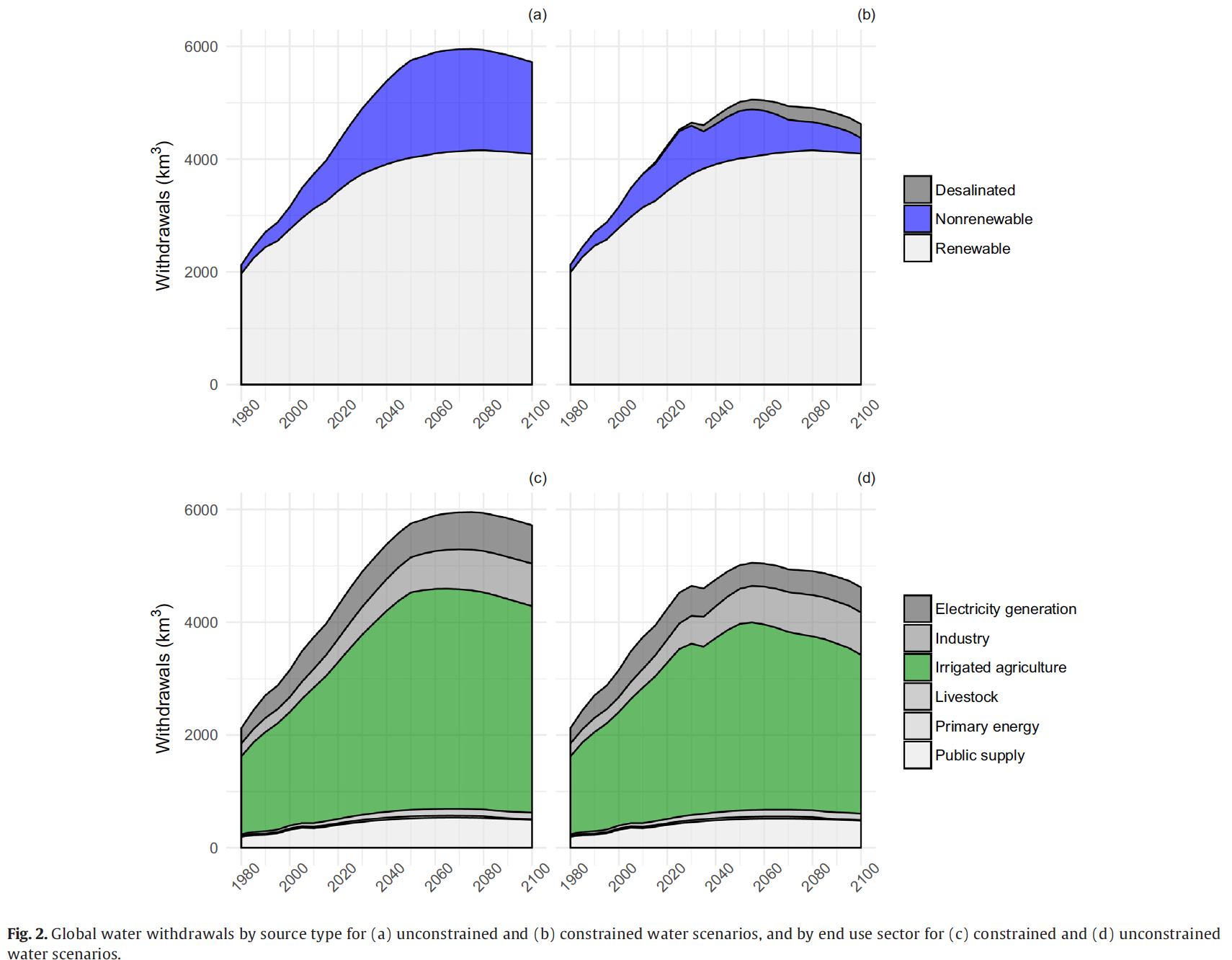
“The largest absolute impacts in crop production are experienced by northwest Mexico, western United States (California and the Missouri basins), the Middle East, Central Asia, South Asia (particularly the Indus basin and in northwest India), and northern China (YellowRiver basin),” forecasts the study lead authored by Professor Sean Turner of the Pacific Northwest National Laboratory, in relation to the model’s realistic scenario for constrained water supplies.
In some of these regions, agriculture would simply collapse:
“… the Arabian Peninsula (where groundwater becomes costly) and California (where groundwater reaches its environmental limit) experience almost total loss of rice and miscellaneous cropland, respectively.”
In other regions, the collapse of irrigated agriculture would drive expansion of rainfed crop land. As a result, the global agricultural system would be forced to transform, with crops shifting to new regions where they can be sustained. “Rice shifts out of Pakistan and India and into China and Southeast Asia,” write the study authors. “Wheat shifts out of Pakistan and China, and into nearly every other region.”
Those areas losing production to climate impacts “will likely suffer significant economic losses.” Meanwhile, the impacts of gained production elsewhere will be so “spread out” that no single region will experience a significant economic benefit.
According to the study’s lead author Professor Turner the model did not look at climate change and how it might affect other water stress issues, including extreme drought. The main drivers of groundwater depletion examined are “population growth, which drives up global food demands and therefore irrigation water demand”, Turner told me. These factors drive water demand across other sectors such as electricity production and resource extraction.
The simulations show global population increasing toward end of century when it begins to level off; crop yields and crop water-use are projected to increase gradually overall, despite some major local and regional reductions. “So the simulated peak groundwater withdrawal isn’t necessarily caused by running out of groundwater. It could just reflect global peak water demand,” said Turner. However, he added:
“When we realistically constrain groundwater we do, however, start to observe the effects of scarcity. Some regions do run out of resource, and in other regions withdrawals cease because over-extraction renders the resource uneconomical. This is what causes the peak to occur earlier in the constrained scenario.”
The Pacific Northwest National Laboratory study does say that in its constrained scenario, if rainfed crops and other regions take-up the slack as other groundwater-dependent regions face agricultural collapse, it would still be possible to sustain global agricultural production through trade: agriculture would end up shifting to areas where renewable freshwater supplies remain abundant.
The bulk of crop production losses can then be “replaced by modest expansion of rainfed and irrigated agriculture in other regions where water is cheaper or more plentiful”, write the scientists, though with the following caveat simply because the post-2100 period is not simulated: “… it remains unclear how long this trend can continue beyond the current century.”
In other words, it may be possible to adapt to these constrained conditions, but to do so the food system will need to change.
In all scenarios, the model shows that global groundwater withdrawals peak around or shortly after mid-century and thereafter begin to decline, slower or faster depending on assumptions.
But perhaps most worrying is that the model focuses exclusively on groundwater depletion. Not only is the impact of climate change excluded, how climate could intensify the occurrence of extreme droughts around the world is not part of the model.
Turner cautioned that “climate change effects on water are highly uncertain” and “can diverge significantly across model projections.” In many regions, climate impacts might decrease stress on groundwater resources by increasing rainfall. Turner told me that one broadly accepted climate change impact is that, irrespective of extreme incidents like droughts in particular regions, overall we are likely to see an additional 2–3 percent increase in total rainfall globally overall for every degree of warming. The other complication, he added, is that “extreme hydrological events are not well captured and projected” in global climate models.
But what happens if climate-induced droughts simultaneously endanger rainfed agriculture as groundwater withdrawals peak and decline?
Is another global food crisis round the corner?
Previous scientific research suggests that we could begin seeing impacts on global food production sooner rather than later due to climate-driven droughts.
In 2010, the National Center for Atmospheric Research (NCAR) found that nearly all of the United States (except mid-Atlantic states and the northeast), along with the south of the UK, parts of northern Europe, much of southern Europe, and Australia, could face severe dryness, approaching “extreme drought” conditions, toward 2040. By 2100, on our current emissions trajectory such conditions would worsen and extend to much of the planet.
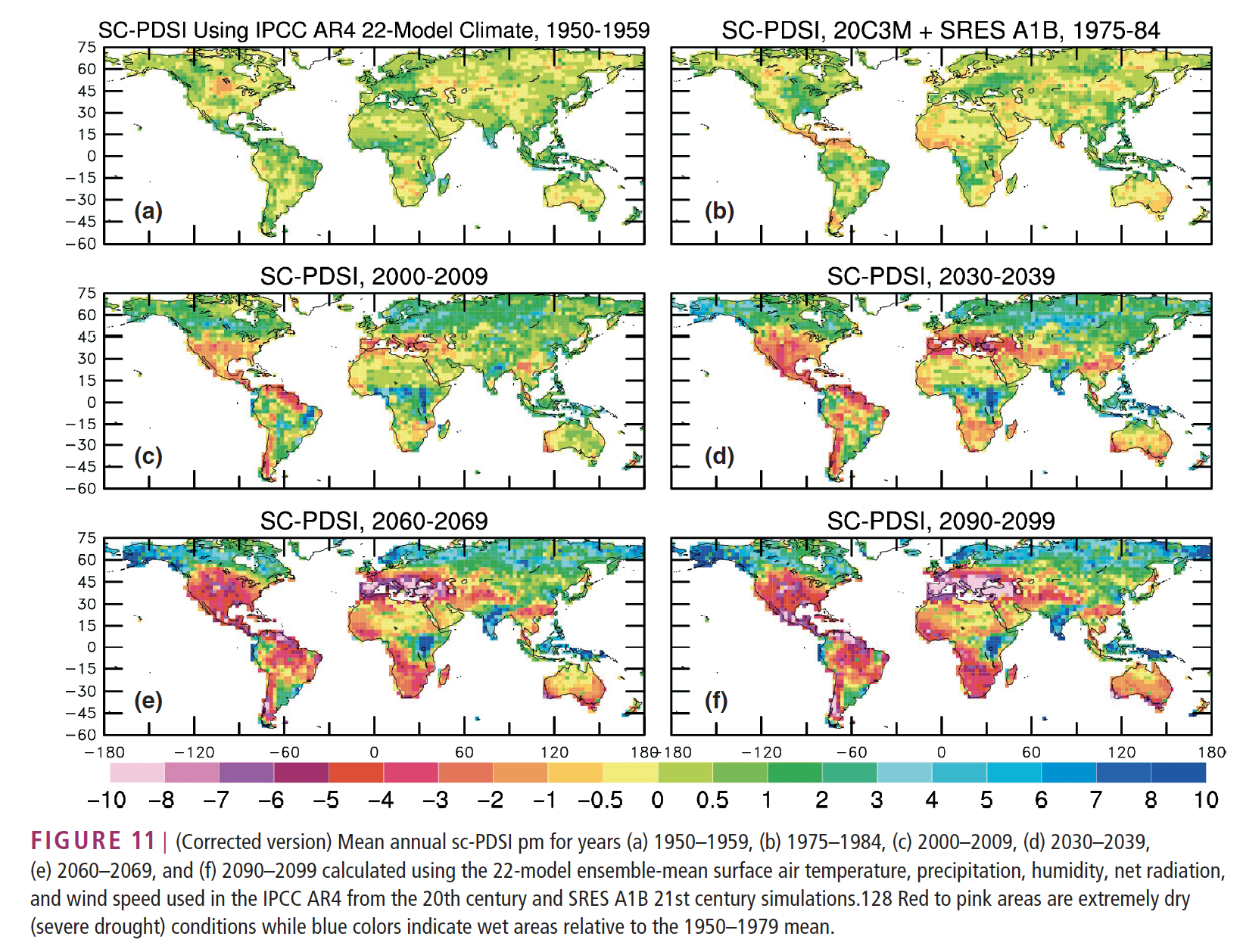
The NCAR model was corroborated by a Potsdam Institute study published in the Proceedings of the US National Academy of Sciences in 2013, which found that “the combination of unmitigated climate change and further population growth will expose a significant fraction of the world population” to “chronic or absolute water scarcity.”
If global average temperatures rise by 2.7 degrees Celsius, the number of people living under “absolute water scarcity” (less than 500 cubic metres per capita per year) would increase by 40 percent, and according to some models, more than 100 percent.
While specific areas like southern India, western China and eastern Africa could see an increase of available water, others like the Mediterranean, the Middle East, the southern United States and southern China, would see a “pronounced decrease of available water.”
A University of Leeds study in 2014, analysing data from over 1,700 published simulations found that climate change would begin to seriously undermine global crop yields after 2030 — so in about a decade.
“There is a majority consensus that yield changes will be negative from the 2030s onwards,” wrote Professor Andy Challinor and his co-authors in their Nature Climate Change paper, with conditions worsening into the second half of the century.
For the 2030s period, a third of climate projections portend yield decreases greater than 10 percent, and a tenth of projections are greater than 25 percent. For the 2040s and 2050s, most climate projections (over 70 percent of them) show yield decreases, whose magnitude increases over time. Through the second half of the century, 67 percent of portended yield decreases are greater than 10 percent, and 26 percent of projected yield decreases are greater than 25 percent.
Some of these impacts may be locked in due to the unfolding consequences of past carbon emissions. We can still avoid some of these impacts, but it will require drastic change. Farmer adaptation earlier in the twenty-first century, wrote Challinor and his colleagues, “can ameliorate some, but not all, risk of yield reductions.” However, if we are going to have a chance of avoiding “significant reductions” in average yields in the second half of the century, we will need to pursue “more systemic or transformational adaptations.”
In September, a science team led by the University of Arkansas analysed 27 climate models, each of which had three different scenarios. They found that on a worst-case business as usual scenario, up to 60 percent of current wheat-growing areas worldwide could see simultaneous, severe and prolonged droughts after mid-century due to climate change.
This is especially alarming given that wheat is the largest rainfed crop by harvested area, supplying some 20 percent of all calories consumed by humans.
The scientists, who published their research in Science Advances, further concluded that even if we succeeded in reducing carbon emissions according to the Paris Agreement targets, up to 30 percent of global wheat production areas could see simultaneous drought between 2041 and 2070.
“If only one country or region sees a drought there is less impact,” said Song Feng, associate professor of geosciences at the University of Arkansas. “But if multiple regions are affected simultaneously, it can affect global production and food prices, and lead to food insecurity.”
Western countries will not be exempt from the consequences, but may experience them quite directly.
A Cornell University study released in May found that climate-induced heat stress could play an even larger role than drought in wiping out US crop yields. The Cornell team drew on over three decades of crop yield records from the US Department of Agriculture, as well as weather data from the PRISM Climate Group at Oregon State University, and hourly snapshots of soil moisture content at nine-mile intervals across the whole of North America from NASA and the National Oceanic and Atmospheric Administration.
The conclusions were shocking. Even under the mildest climate scenario, yields for the six main crops in the US — maize, cotton, sorghum, soybeans, spring wheat and winter wheat — are predicted to decrease 8–19 percent due to climate change between 2050 and 2100. Under the worst-case scenario, crop yield reductions range from 20 to 48 percent over this period.
Because these impacts are principally related to heat-stress, not water scarcity, the implication is that many food-producing regions in the US could end up being drier due to summer heat even with increases in rainfall. When combined with water scarcity impacts, the potential picture looks catastrophic.
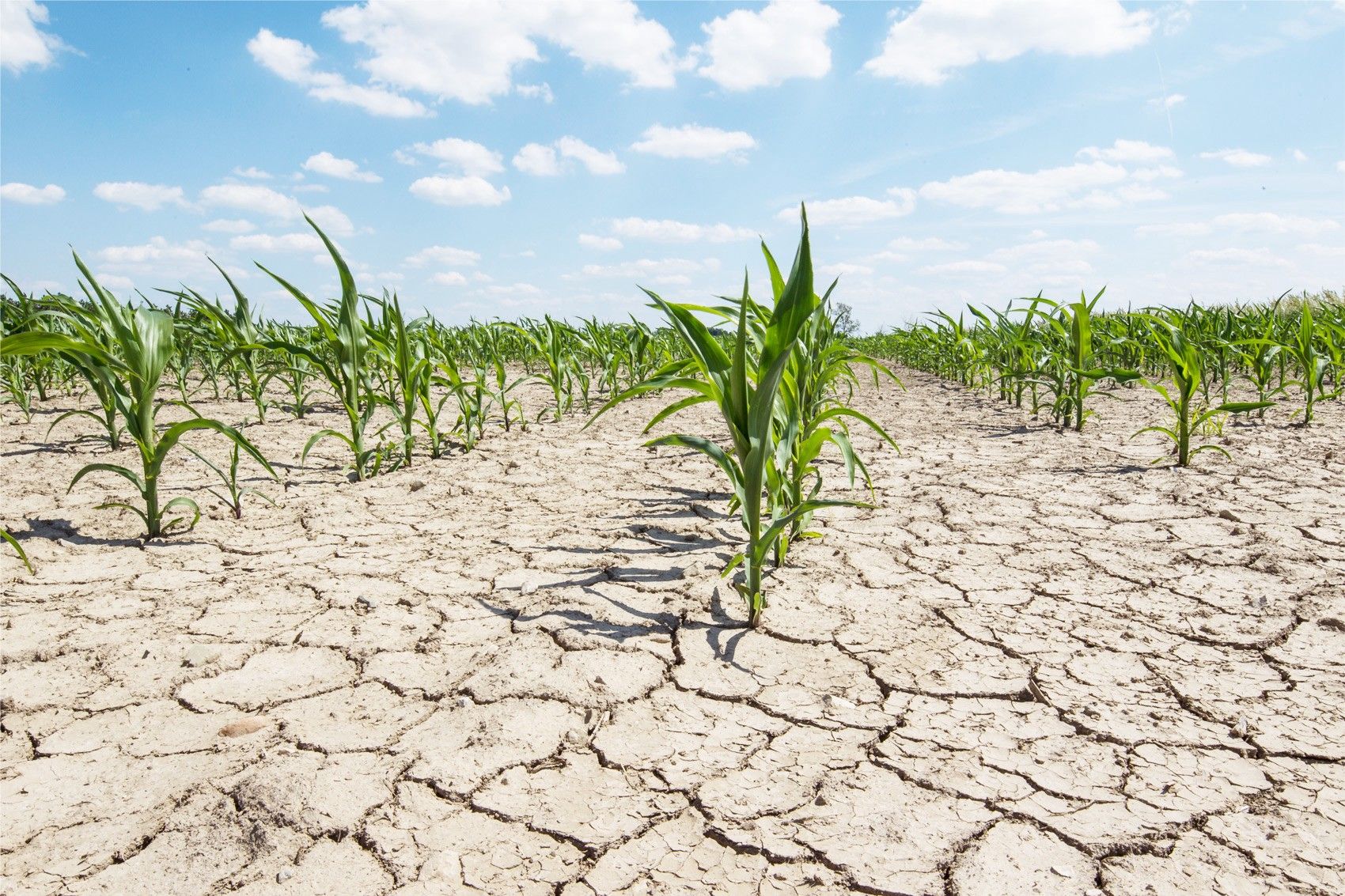
Hitting the danger zone from 2022
While many of these climate projections are for after mid-century, with some impacts beginning to kick in after 2030, compelling evidence points to significant near-term risks that could even erupt within a few years.
In 2012, a study by IPCC lead author Professor Piers Forster of the University of Leeds’s School of Earth and Environment, among other scientists, warned that large parts of Asia responsible for producing much of the world’s wheat and maize would experience severe droughts within 10 years. We are now just a few years away from this timeline.
Yet some of these are the same regions to which the Pacific Northwest National Laboratory study hoped groundwater-dependent agriculture would be able to migrate.
Based on 12 different ‘state of the art’ climate models, the research found that after the early 2020s, on average droughts across Asia lasting longer than three months would be more than twice as severe in terms of their soil moisture deficit compared to the 1990–2005 period. This could pose a serious and imminent risk to global food supplies, the research revealed. As early as 2022, the report found,
“… droughts will, on average, become months longer and markedly more severe (132 percent and 154 percent on average for wheat and maize) across Asia… The increased drought risk is an imminent threat to food security on a global scale.”
The countries most affected would be China, India, Pakistan and Turkey according to the report, titled Food Security: Near future projections of the impact of drought in Asia, and published by the UK-based Centre for Low Carbon Futures.
“Our work surprised us when we saw that the threat to food security was so imminent; the increased risk of severe droughts is only 10 years away for China and India,” said report co-author Dr Lawrence Jackson eight years ago. “These are the world’s largest populations and food producers; and, as such, this poses a real threat to food security.”
If the University of Leeds analysis is accurate, the risk of climate-induced droughts in parts of Asia triggering a global food crisis could start to become acute as early as 2022. That’s two years from now.
Much of southeast Asia is already beginning to experience drought as a norm rather than an exception. In 2019, Australia was forced to import wheat for the first time in 12 years due to drought across the country’s eastern states.
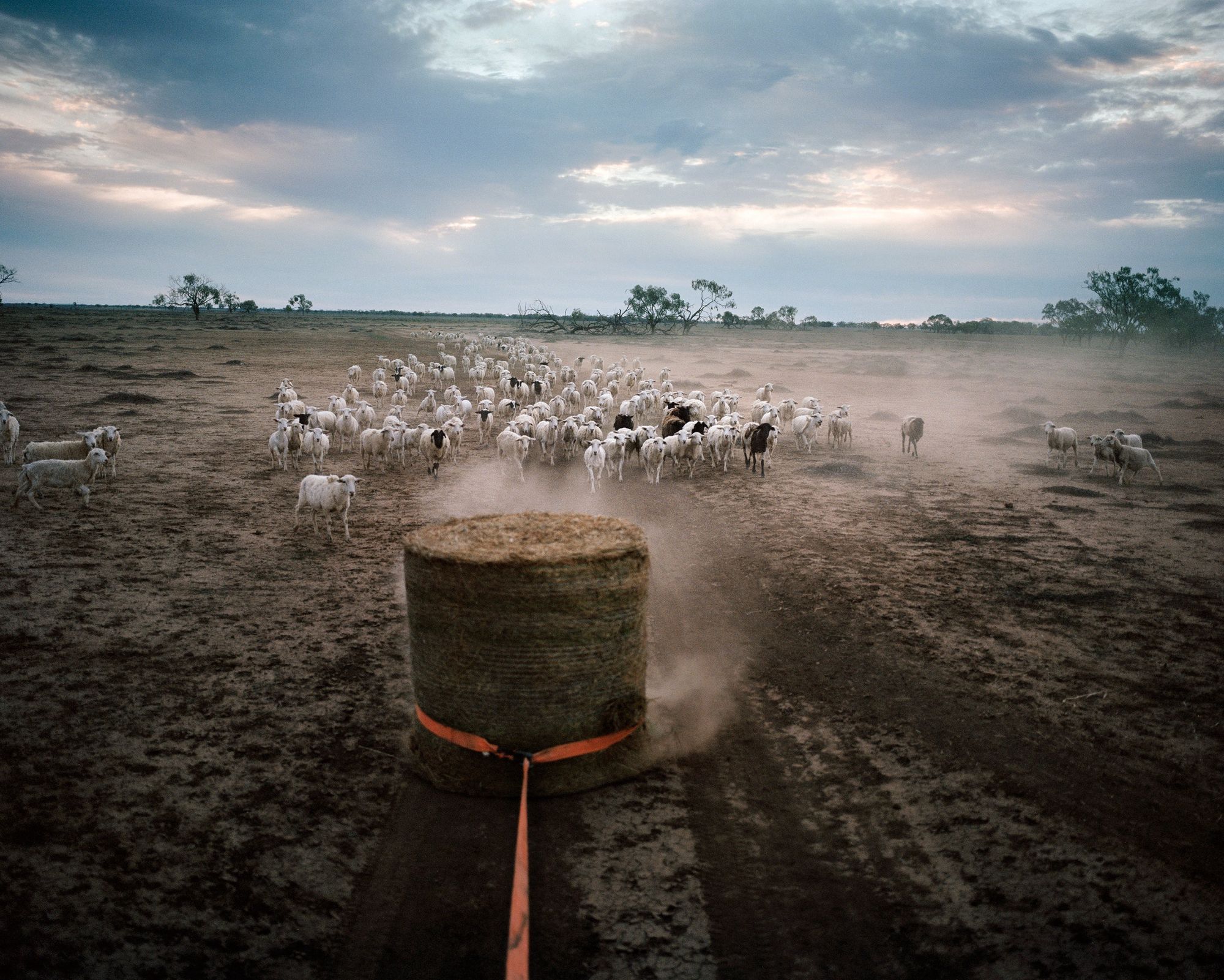
Global food system meltdown
Two new studies in Nature Climate Change complement this analysis by looking at the danger of multi-breadbasket failures — climatic extremes hitting more than one major breadbasket region at the same time, resulting in unusually low global agricultural production.
One study by Franziska Gaupp and co-authors confirms that the probability of multiple breadbasket failures has increased in recent decades due to climate change. This is only going to get worse. A 2018 study in the Proceedings of the National Academy of Science found that if global average temperatures rise by 2°C, there is an estimated 7 percent probability of simultaneous losses across the world’s maize breadbaskets; the probability rises dramatically to 86 percent under a 4°C warming scenario.
That is the scenario we are currently heading toward. According to Moody’s Four Twenty Seven report, actual carbon emissions trajectories are heading toward a 3–4°C world by 2100.
This could be an underestimate. As I reported for VICE, eight new models being developed for the IPCC’s Sixth Assessment suggest that temperatures could rise as high as 7°C by 2100 on currently escalating rates of exploitation of fossil fuels, largely due to amplifying feedbacks between ecosystems whose complexity wasn’t captured in older models.
Another study by Kai Kornhuber and colleagues found that a newly-identified pattern in the northern jet stream, known as ‘Rossby waves’, could trigger simultaneous heatwaves and floods in parts of North America, Europe and Asia, endangering global food supplies. Rossby waves are huge, undulating movements of the atmosphere and oceans that stretch horizontally across the planet for hundreds of kilometres in a westward direction. They are so large and massive that they can change Earth’s climate conditions.
In turn, global warming appears to amplify the meandering pattern of Rossby waves — thus increasing the likelihood of extreme weather configurations fixing simultaneously across multiple food basket regions. “We found a 20-fold increase in the risk of simultaneous heat waves in major crop-producing regions when these global-scale wind patterns are in place,” said Dr Kornhuber of Columbia University’s Earth Institute.
While these studies alone don’t tell us much about how close we are to a risk of multi-breadbasket failure, in context with the other research reported here, we can see how this risk is a real one in the near-term, and one that becomes more and more probable on a business-as-usual trajectory over coming decades.
Climate change could help starve half the planet in forty years
The risks to the global food system can seem abstract, especially when focusing on measures such as yield reduction percentages. But they could have truly devastating human impacts, experienced by millions of people around the world.
In 2016, Climatic Change published a landmark study that went largely unnoticed until now, modelling the consequences of business-as-usual climate scenarios for levels of global hunger. The numbers are mind-numbing.
The study lead authored by Terence Dawson, professor of global environmental change at Kings College London, concluded that even without climate change, based solely on projected global population growth tracked against agricultural land use, some 2.5 billion people — 31 per cent of the global population — face the risk of undernourishment within the constraints of a deeply unequal global food system.
Currently, according to the UN, some two billion people already experience moderate levels of food insecurity, that is, they don’t have regular access to safe, nutritious and sufficient food. This means they often face uncertainty in their ability to obtain food, forcing them to make stark choices between the quality and quantity of food.
This figure includes the one in nine people, over 820 million, who go hungry as a consequence because they regularly don’t have enough to eat — a figure which has risen since 2014 by about 37 million.
But when climate impacts on global food production are incorporated into these models, the Climatic Change study finds that an “additional 21 percent (1.7 billion people) is at risk of undernourishment by 2050.”
This means that carrying on within the current global food system with no change of course, and maintaining our chronic dependence on fossil fuels, will lead us into a world in which over 50 percent of the entire human population — 4.2 billion people — would be at risk of undernourishment by 2050. In this horrifying scenario, crop yield reductions inflicted by climate change would compound an already deeply skewered food system.
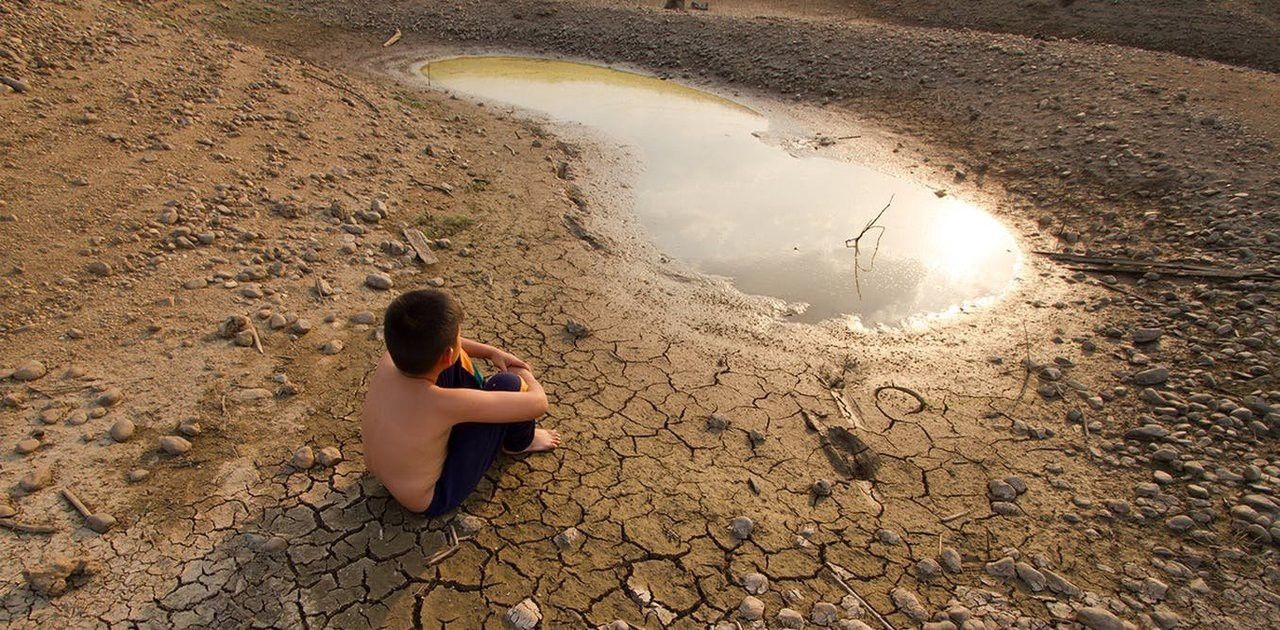
And this wouldn’t just affect poor countries of the Global South, but would increasingly impact richer, industrialised nations. The Climatic Change study finds that “some parts of Europe, South-East Asia, USA and Russia” will be “seeing an increase in the population at risk of undernourishment.”
In other areas, the situation will be much worse. For instance, “most of South America and Africa, Australia and central Asia will see 50 percent or more of the population at risk of undernourishment.” Although not as bad in some Western countries, food security will be a rising issue:
“For example, Australia and the UK, both showing significant undernourishment by 2050, have projected population increases of 50 and 23 percent respectively for 2050 whereas crop (wheat) production for these countries will decline significantly due to unfavourable climate conditions (60 and 16 percent declines reported for Australia and the UK respectively).”
Even in the US, where wheat production could initially increase over the next few decades by 24 percent according to this model, production will be exceeded by “a 40 percent population growth” that will strain food supplies.
Food systems at the crossroads
While some of the longer-term climate impacts outlined by the Four Twenty Seven report are now unavoidable, what of these other projections? How much can we change, and how much can we avert?
Most experts agree that it’s not yet too late to change the way we produce food around the world in a way that can lead to a more stable and resilient system. Even if various impacts kick in, we may be able to ensure that their fallout is minimised. But doing so requires fundamentally re-thinking our relationship with food, and the planet.
According to Sara Walker of the World Resources Institute, one of the quickest and most effective areas where we can act is in relation to food waste. One third of all food produced globally is lost or wasted. Some of this happens along the supply chain; a lot of it in the West happens at the point of consumption. According to the Rapid Transition Alliance, in North America, 58 percent of food wastage occurs at consumption, compared to just 6 percent in Sub-Saharan Africa. But in the latter, 36 percent of waste occurs in storage and handling, compared to just 6 percent in North America.
A quarter of all water used for agriculture is expended on wasted food. If food waste was eliminated this alone would go a huge way toward shoring-up stability across the food system and meeting the needs of the most vulnerable.
Walker also recommends that we need to “shift diets to less water-intensive foods. These are generally the same foods suggested for healthy diets — it’s about being more plant based.”
And she calls for governments and companies to invest in more sustainable farming practices designed to “restore soils to hold more water, capture rainwater for reuse, use drip irrigation, and choose crops suitable for the growing area.”
Some of these changes come under the umbrella of ‘agroecology’, which attempts to apply ecological principles to agriculture and a regenerative approach to natural resource use as well as the social and economic contexts of production.
A recent paper in Nature Climate Change found that regenerative farming practices can contribute to help drawing down carbon from the atmosphere, sequestering it in and restoring soils — by as much as 30 percent a year of the global mitigation needed to remain within 1.5 degrees Celsius by 2050.
Last summer, the UN’s Committee on World Food Security released a major report from its High-Level Panel of Experts on Food Security and Nutrition (HLPE), calling for agroecological methods to be pursued as the key to sustainable food systems.
“Food systems are at a crossroads,” the report warned. “Profound transformation is needed to address Agenda 2030 and to achieve food security and nutrition (FSN) in its four dimensions of availability, access, utilization and stability, and to face multidimensional and complex challenges, including a growing world population, urbanization and climate change, which drive increased pressure on natural resources, impacting land, water and biodiversity.”
At the report launch in Rome, HLPE Project Team Leader Dr Fergus Sinclair told attendees that change is urgently needed to avoid crisis: “Unless we have a major transformation of food systems that affects what people eat and how it is produced, transported, processed and sold we are not going to solve current problems.”
We haven’t even touched upon many other critical elements of the crisis: such as the catastrophic decline in bee populations among other pollinators, which according to the UN Food & Agricultural Organisation (FAO) is driven by a combination of intensive industrial farming practices, including mono-culture (growing one crop in one area, as opposed to cultivating crop mixtures or rotating different crops), excessive pesticide and fertilizer use, pollution and climate change; or soil erosion under industrial practices, which by 2050 may by itself reduce up to 10 percent of crop yields according to the FAO; or the declining efficiency and increasing production costs of fossil fuel inputs into industrial agriculture, which is not only driving carbon emissions to dangerous levels, but means that industrial agricultural production is bound to becoming increasingly expensive and inefficient over time.
The mounting evidence on the coming global food crisis demonstrates how ineffective and piecemeal our current approaches are. We still think and act in entrenched disciplinary and sectoral silos, and evening our scientific assessments are extremely narrow — largely capable of focusing on only one dimension of the crisis at a time, and incapable of comprehending their synergistic consequences.
When viewed together it’s clear that the coming decades will see escalating converging pressures on the global food system which will increase the probability of breakdowns year on year — and this will be the case even as we attempt to transition to something better.
The transition to sustainable agroecological methods means much less emphasis on machines and fossil fuels, and more emphasis on people. A study in November published in Frontiers in Sustainable Food Systems by a team of US food science experts, calls for recognition that “fossil fuel- and chemical-intensive management” must be replaced “with knowledge-intensive management.”
Translation: this means that “the greatest sustainability challenge for agriculture may well be that of replacing non-renewable resources with ecologically-skilled people, and doing so in ways that create and support desirable rural livelihoods.”

This is why, according to US biologist and farmer Dr Jason Bradford, President of the Board of the Post Carbon Institute (PCI), the future is rural. Bradford also authored a PCI report with this title earlier this year. We cannot feed the world within the current food system, he told me, because its goal is to “maximize profit instead of stewarding the earth and enhancing ecosystem services.”
In other words, the coming global food crisis is the symptom of a deeper problem, of an entire economic paradigm which is slowly unravelling.
In the future, therefore, a viable new food system will “be much more locally oriented, rely much more on labour as a factor of production, and cut out a lot of the energy intensity in the current system that goes into food processing and packaging,” said Bradford.
We are also likely to see a need to transform urban spaces into food-producing regions, amidst greater migration to rural areas.

We could see “a reinvigoration of smaller cities in areas of high biocapacity, for instance, the rural midwest of America, plus more people actually engaged in productive activities who live in rural places,” Bradford said. The central point is that “cities are not where anything materially important comes from and so will always be dependent upon rural hinterlands for the flow of goods into them and the places where waste must eventually end up.”
How exactly this plays out only time will tell, but Bradford sees a future of more local production, a growth of rural areas as well as more urban farming — one in which more consumers take control of, and get involved in, producing food sustainably.
For the food industry, nonprofits, entrepreneurs, policymakers and ordinary citizens, these are the issues we need to reflect on and innovate in.
Perhaps the most important lesson from all this is that the coming global food crisis is symptomatic of the fact that our global industrial systems are deeply out of sync with the natural world. The new agroecological farming systems we should nurture instead, according to the Frontiers study, will be ones that “mimic natural ecosystems, creating tightly coupled cycles of energy, water, and nutrients.”
The current structure of the global food system is part of an extreme, reductionist materialist paradigm which is degrading natural ecosystems to keep maximising profits year-on-year: it operates in service to a way of being and a worldview which fetishises endless material growth for the benefit of a tightening minority.
As we approach end of century, we will continue to see evidence of the self-destruction of this failed paradigm. Developing new, sustainable approaches to food production and distribution is one of the key entry-points into the emergence of a new, post-materialist paradigm designed to regenerate planetary ecosystems, meet human needs, and support wellbeing.
Along the way, the breakdown of the old food system is bound to generate certain unavoidable consequences. These could cause significant harm to many, both in poorer developing nations, and richer industrial countries — but it is still not too late to avert the worst possibilities and build resilience to what is coming. We need to start now.



